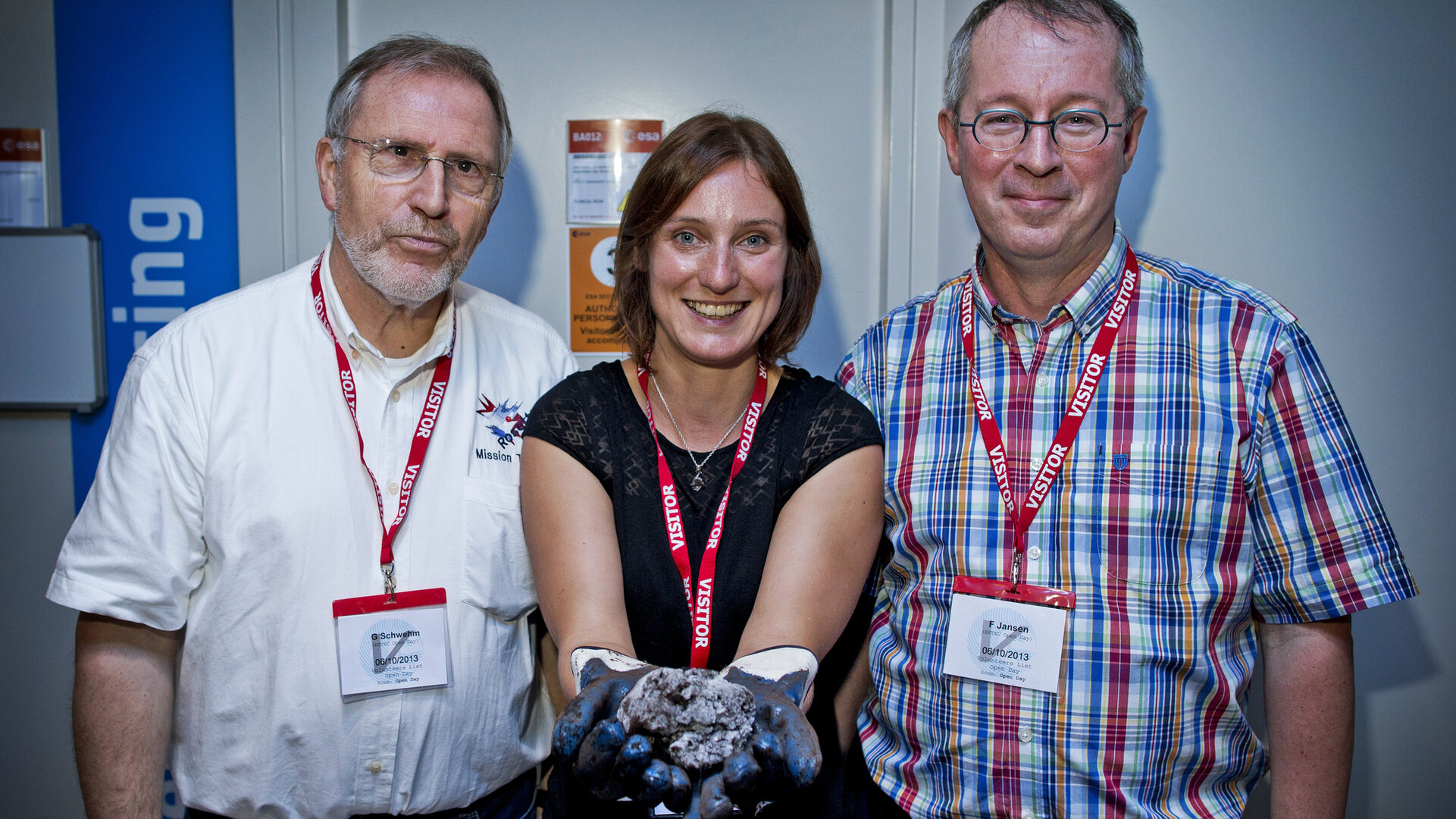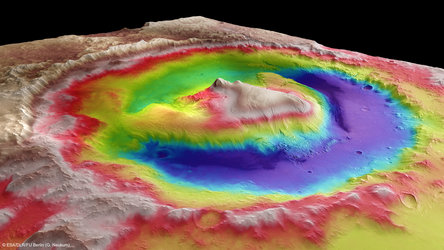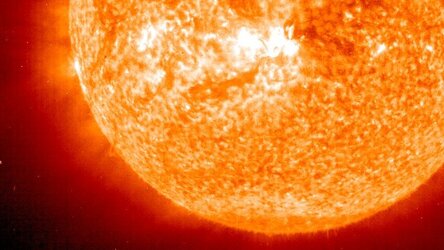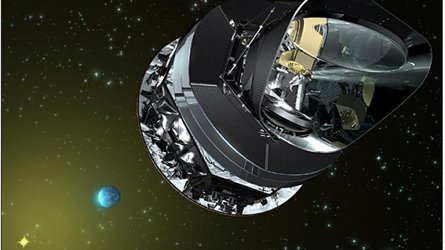Cook a comet
Yesterday, thousands of visitors to ESA’s technical heart in the Netherlands enjoyed learning more about ESA space missions, including Rosetta – the daring spacecraft that will rendezvous with a comet next year.
Rosetta has been in deep-space hibernation since June 2011 while on the loneliest leg of its 10-year journey through space to its destination: comet Churyumov–Gerasimenko.
The spacecraft will wake up early next year and rendezvous with its target comet several months later, taking images of its dust–ice nucleus and studying the gases jetting from the surface. It will be the first mission to follow a comet as it moves towards the Sun, watching as its activity changes over time.
In November 2014, Rosetta will deploy its Philae lander to the surface of the comet for an even closer view.
As part of the Rosetta display at the ESTEC open day, visitors could ask questions of mission manager Fred Jansen and comet expert Gerhard Schwehm, while learning more about comets in the ‘cook a comet’ demonstrations.
Comets are composed primarily of dust, ice and organic material. A simple model of a comet is created by mixing together dirt, water and dry ice (frozen carbon dioxide), with a generous slug of chocolate sauce to represent the organic component. Thick gloves are needed to handle the dry ice to protect against cold ‘burns’.
As water is added to the mixture a rather violent reaction begins as the freezing dry ice meets the much warmer water, and changes directly from a solid into a gas.
That’s also what happens in space when the comet moves from the frigid outer Solar System and closer to the Sun. As it warms up, its ices turn into gas, and jets may activate on its surface. Small jets are also seen on the model comet where ice is exposed.
Comets are thought to contain some of the most ancient materials in the Solar System that were left over from when the planets formed some 4.6 billion years ago. These icy bodies may even have delivered water to Earth and charged it with ingredients that helped life take hold on our home planet.
Exploring comets close up with a mission like Rosetta will therefore help us learn more about the early history of our Solar System, while providing the most detailed view of a comet yet.
Also on display at the Open Day along the main corridor were ESA science exhibitions showcasing Gaia, BepiColombo and Planck.
Gaia will be launched into space at the end of next month to survey a billion stars and map the Milky Way in three dimensions. BepiColombo will be launched to the Solar System’s innermost planet, Mercury, in 2016; the engineering model is currently being tested in the cleanrooms at ESTEC.
Cosmology experts were on hand to discuss the latest results from the Planck mission, which earlier this year unveiled the most detailed picture of our infant Universe.
Check the ESA Portal this week for more images from Open Day 2013!









